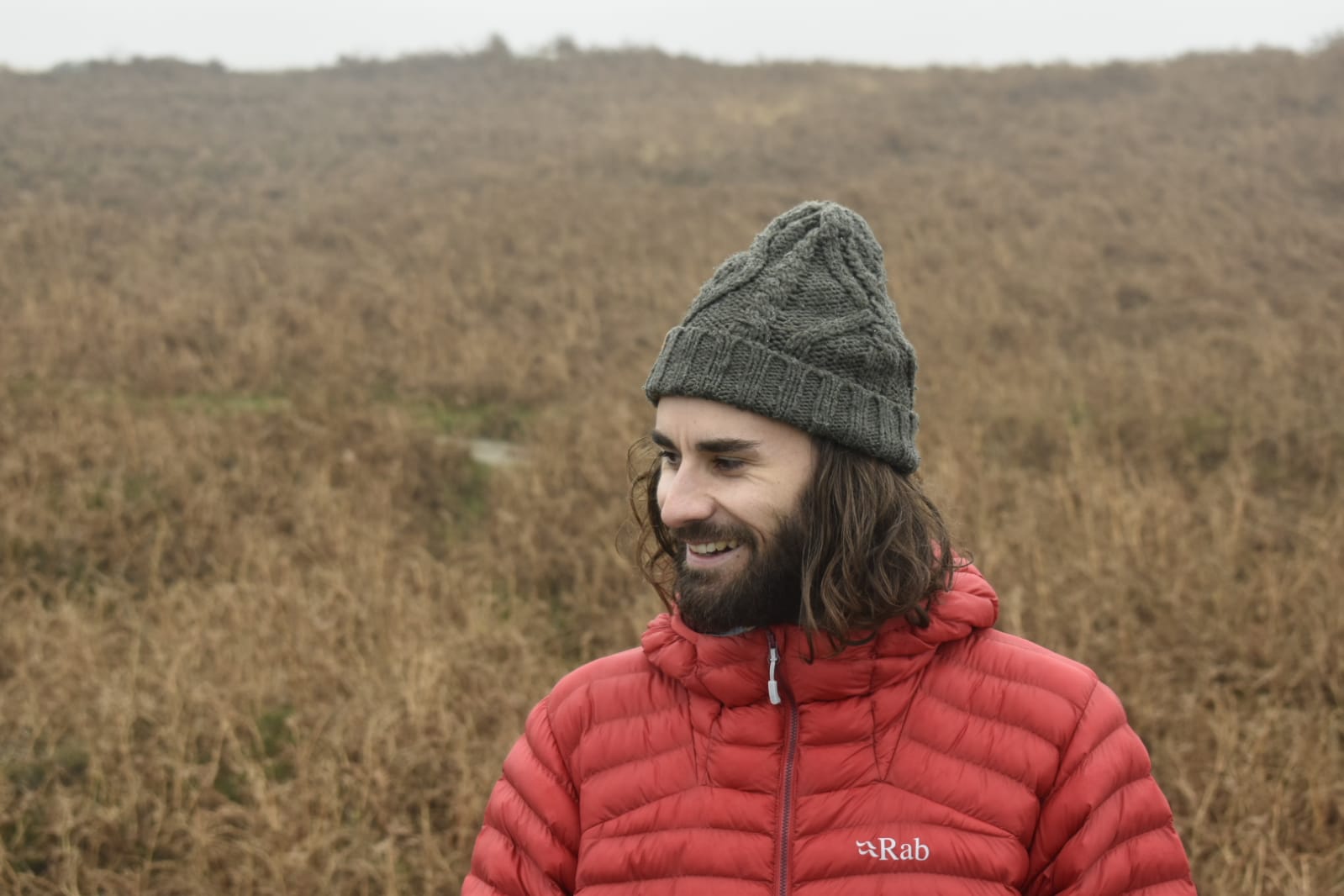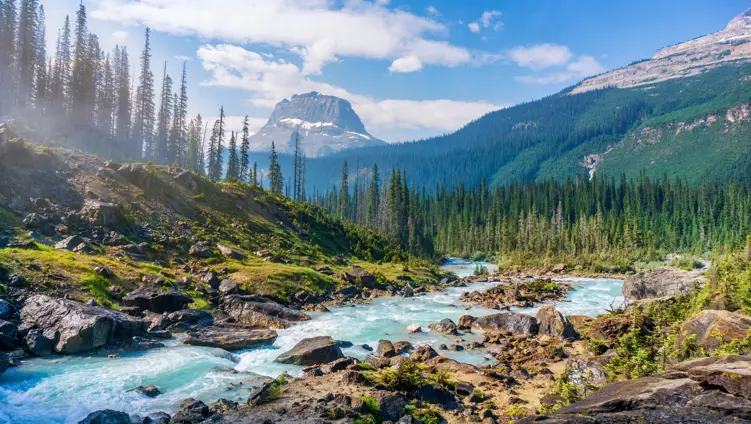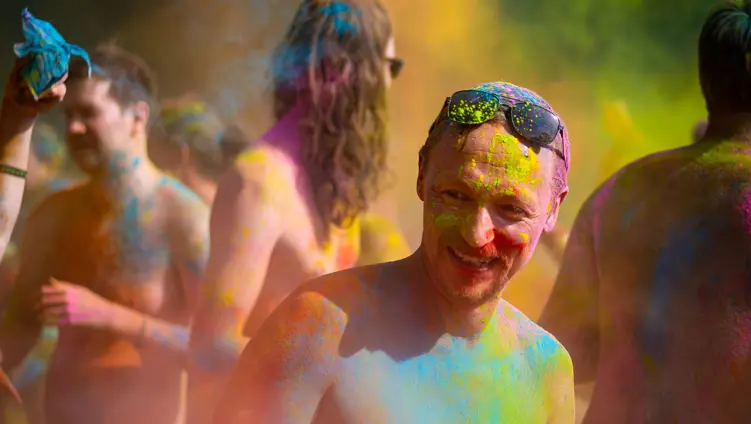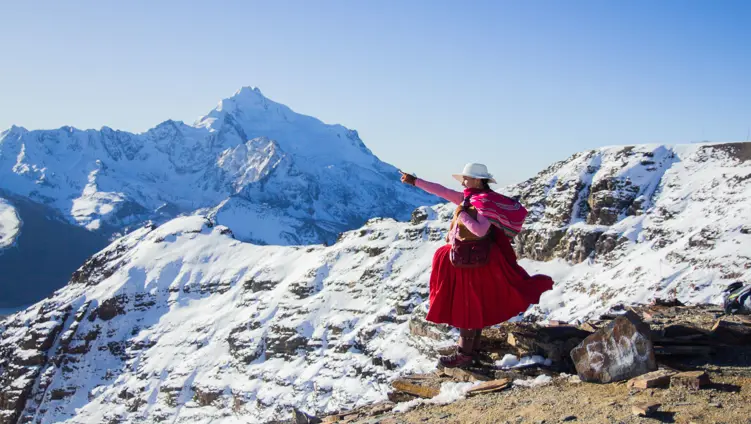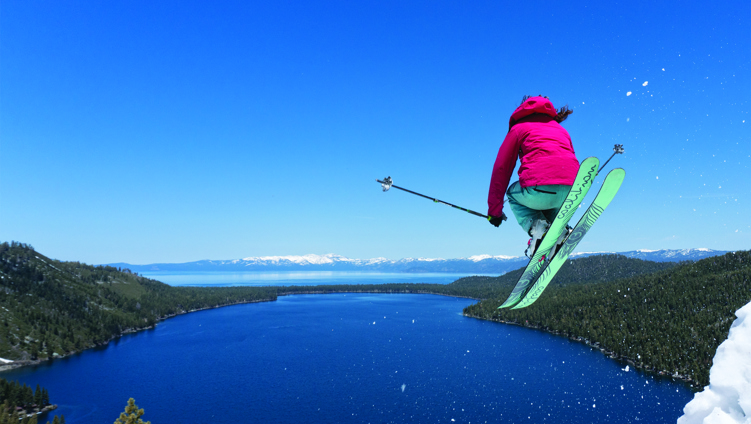
‘Go home Polish’
In 2008, when Michal encountered this xenophobic demand on a Cardiff wall, he felt at home in Wales after seven years. But, he says, “When you read ‘Go home Polish’, and you are Polish, you automatically ask yourself that question: ‘Am I home?’”
Years later, “with the Brexit referendum, and Europe starting to stink of nationalism,” this seed germinated into Go Home, Polish: a 1900km walk - in a straight line, as if obeying an order - from Cardiff to Michal’s childhood village in Poland. The broad aim was to explore the idea of home.
Walking an average of 18km for 105 days through a European heatwave, Michal recorded the journey through photographs of himself, the landscape and motifs of home. He spent his evenings processing photographs and planning the next day’s route and accommodation.
Photos from Michal's trip, including the graffiti that helped motivate it.



Finding home in the world
The process became fruitful only after Michal dropped his preconceptions. “I set off with ideas of making a profound project, and inadvertently created some sort of myth of myself that I carried along and wanted to fulfil, not knowing what that even meant,” he recalls. “The first few days I focused all of my energy on holding that story up so it wouldn’t collapse. So I wasn’t really looking outside, hearing or listening, because I was so insecure about the process. But a few days later, you get tired of carrying that weight and your back starts to hurt, so you just drop it.”
Many will relate to the vulnerability required to relinquish control, and the richer experience awaiting those who do. But what did Michal learn about what home means to people?
“There is a physical gesture: people put their hand on their chest. So I concluded that home is an organ that we haven’t located yet,” he jokes. His point is that people generally referenced the feeling of home, rather than their home country. This meant less hostility than Michal anticipated. “I would expect the kindness … but I was expecting negativity to come. And it did a few times, but normally it was just human to human, rather than national to national.
“I understand that the context in which I was asking people was a very neutral context, as a tourist with a big bag,” Michal says, acknowledging the specificity of travelling interactions. “It's easy to just give a sugarcoated answer. I'm sure if we sat down and started digging deeper, they would have developed their idea of home. But xenophobia is usually very reactive, as well. It's usually quite quick and aggressive; it's never really thought through.”
'I set off with ideas of making a profound project, and inadvertently created some sort of myth of myself that I carried along and wanted to fulfil, not knowing what that even meant.'
This begs the question: how reliably can we use these travelling experiences to respond to ‘normal’, day-to-day interactions?
“It's actually very easy to make that conversion,” Michal argues. “For me it was definitely a very positive switch from looking at our feet, and looking down at little patches of land, to looking up more globally. I understand that we are all little pieces of cells crawling on this piece of rock that’s spinning through space.”
Kindness on the road does not excuse or erase prejudice elsewhere, but travelling can illuminate the universality of certain things, like the feeling of belonging required to feel at home. Seeing this can at least shed light on the workings of xenophobia, and remind us that people are generally good.
Photos from Michal's journey.



The power of walking
Michal sees the value of Go Home Polish as inextricably linked to walking - a mode of travel he also employed in tracing the footsteps of his grandfather, Tolek, and granduncle, Wiktor, who walked over 2000km after escaping Soviet captivity in 1945. “Everybody should walk home for a month or two in their lives,” Michal says. “That would solve most of the world’s problems.”
“Very directly, the fact that you walk means you see much more,” Michal explains. It allows for “the surprise of the little things,” he says. “Many images were of obscure places I wouldn’t otherwise get.”
There is a “meditative state that you're in when you are walking - that's how you are tuned as a hunter gatherer. We are creatures of nature. The fact that philosophers come up with their theses by walking … there is something to be said about this. Rebecca Solnit, in her book Wanderlust, says that the stream of consciousness flows at roughly 5 kilometers per hour.”
'Everybody should walk home for a month or two in their lives. That would solve most of the world’s problems.'
Michal also found walking connecting him to his childhood. “When I was a child growing up in the countryside, that is how I spent most of my time: outdoors, exploring,” he reflects. “I would sometimes go out wandering and lose my way and try to find home - better stick to mama. And, walking across Europe at 41, I thought, ‘This is exactly the same process, but a grownup version of it - looking for home, but in a much broader sense.’ I found it precious to connect to that child.”
Capturing home
Michal’s photographs of the trip exhibit a characteristic combination of social awareness and humour, and emerged as conversations with strangers, landscape features and reflections on home intertwined.
Some images leapt out, like the one of a crow’s nest tangled irreverently in the barbed wire atop the Calais border fencing. “This scruffy looking nest, right in the middle of ‘No access’ and the French values of brotherhood and freedom and liberty,” Michal reflects. “That's all you need to know.”
A crow's nest perched in the barbed wire of the Calais border fencing.
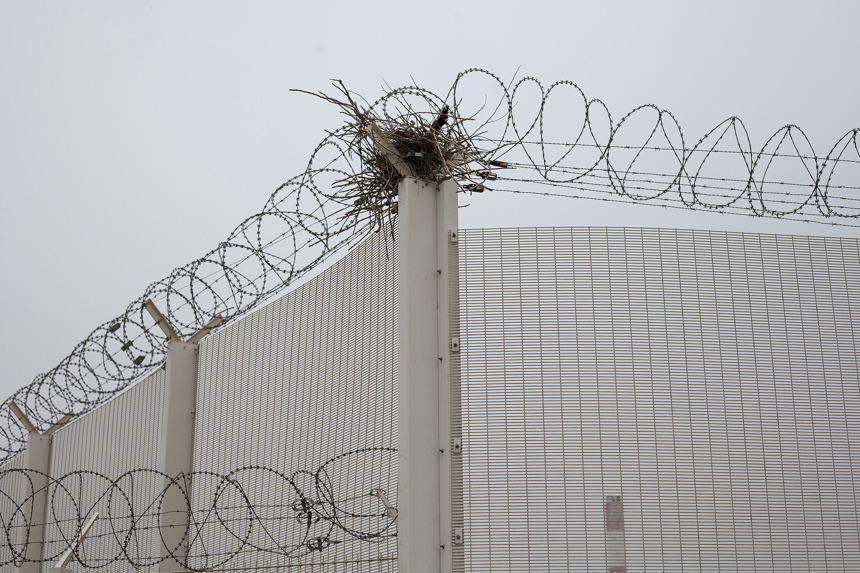
Others took shape gradually, with “stories from people … suddenly meeting their manifestation somewhere.” For example a British couple unable to fathom how Michal, a British citizen, could stay in the UK after Brexit without a visa or work permit were reflected in “these two concrete poles, very close together, somewhere in Germany. It was perfect for me to try and squeeze through those, as if through a vice that those people in England set for me, highlighting that citizenship may not necessarily make me British enough.”
Another photo depicts Michal contorting himself through a wire coil. Encountering the wire the day after receiving angry glares as Poland were getting thrashed in the World Cup on the hostel television (Michal was wearing an ironic t-shirt with a Polish flag, but cares nothing for football), the wire became “exactly the straight-jacket” the spectators had used to make assumptions about him. “I thought the only way I can exercise this demon is to actually get myself into this straight jacket,” he recalls. “It took me a couple of hours and a lot of scratches, but it was fantastic. The exorcism was complete.”
Michal contorting himself through a wire coil, or the 'straight jacket' of national identity.
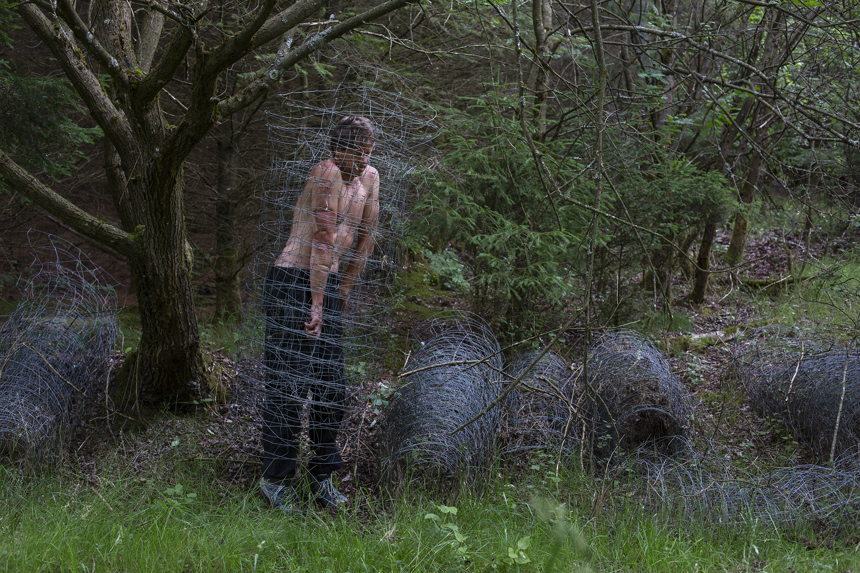
'I thought the only way I can exercise this demon is to actually get myself into this straight jacket. It took me a couple of hours and a lot of scratches, but it was fantastic. The exorcism was complete.'
Humour, particularly self-irony, runs throughout. “Whenever I found an opportunity to become a Polish worker stereotype, I jumped at it,” he laughs, in reference to a photo of him carrying a large sack through a field. “There are so many sins the Polish worker has got to answer for, you know. I became a Polish plumber, a Polish construction worker …”
These performative elements initially felt uncomfortable, until Michal “passed the Rubicon” by swaying topless in a field before his camera. But there is a serious point to them.
'Whenever I found an opportunity to become a Polish worker stereotype, I jumped at it. There are so many sins the Polish worker has got to answer for, you know. I became a Polish plumber, a Polish construction worker …'
Xenophobic language on walls or in populist media signals a dangerous trajectory. “You know what happened in the 1930s, when the Jewish communities were targeted in Germany - when hatred was normalised, gradually, to a point where it was ok for the propaganda machine to use such language as ‘cockroaches’ - and the next thing you know we had the gas chambers,” he says, referencing the subtext of rising nationalism in the UK and Europe. “We cannot normalise that kind of language. We must not allow that.”
Michal performatively becoming a Polish worker.

This resistance shaped Michal’s journey. “I refuse to be Polish. I refuse to be any kind of bigger group. Because I am just Michal Iwanowski. That is as much as I can take responsibility for,” he explains. “So I thought the only way to oppose the othering and generalisation was to actually be the protagonist of this project - be the face with a name and national insurance number. You see a person.” After all, he says: “It’s much more difficult to say ‘Go home’ to Michal Iwanowski’s face than it is to write ‘Go home, Polish’ on a wall.
Recommendations and references
- Arno Minkkinen: A Finnish-American photographer exploring the space between self-portraiture and landscape photography.
- A Line Made By Walking: A 1967 sculpture by Richard Long, for which he walked a faded path into a patch of grass before photographing the result.
- Ana Mendieta: A Cuban photographer and artist who explored the relationship between the female body and nature through ‘earth-body’ works.
- David Nash: A British artist working with natural materials, especially live trees.
- Hamish Fulton: A ‘walking artist’ who creates photographs, sketches, and text pieces around his walks. “If I do not walk, I cannot make a work of art,” he says.
- We Make the Path by Walking: A series of landscapes, published by Irish photographer Paul Gaffney in 2013, created during a series of long-distance walks.
- Wanderlust: A book by Rebecca Solnit tracing a history of the power and potential of walking.

